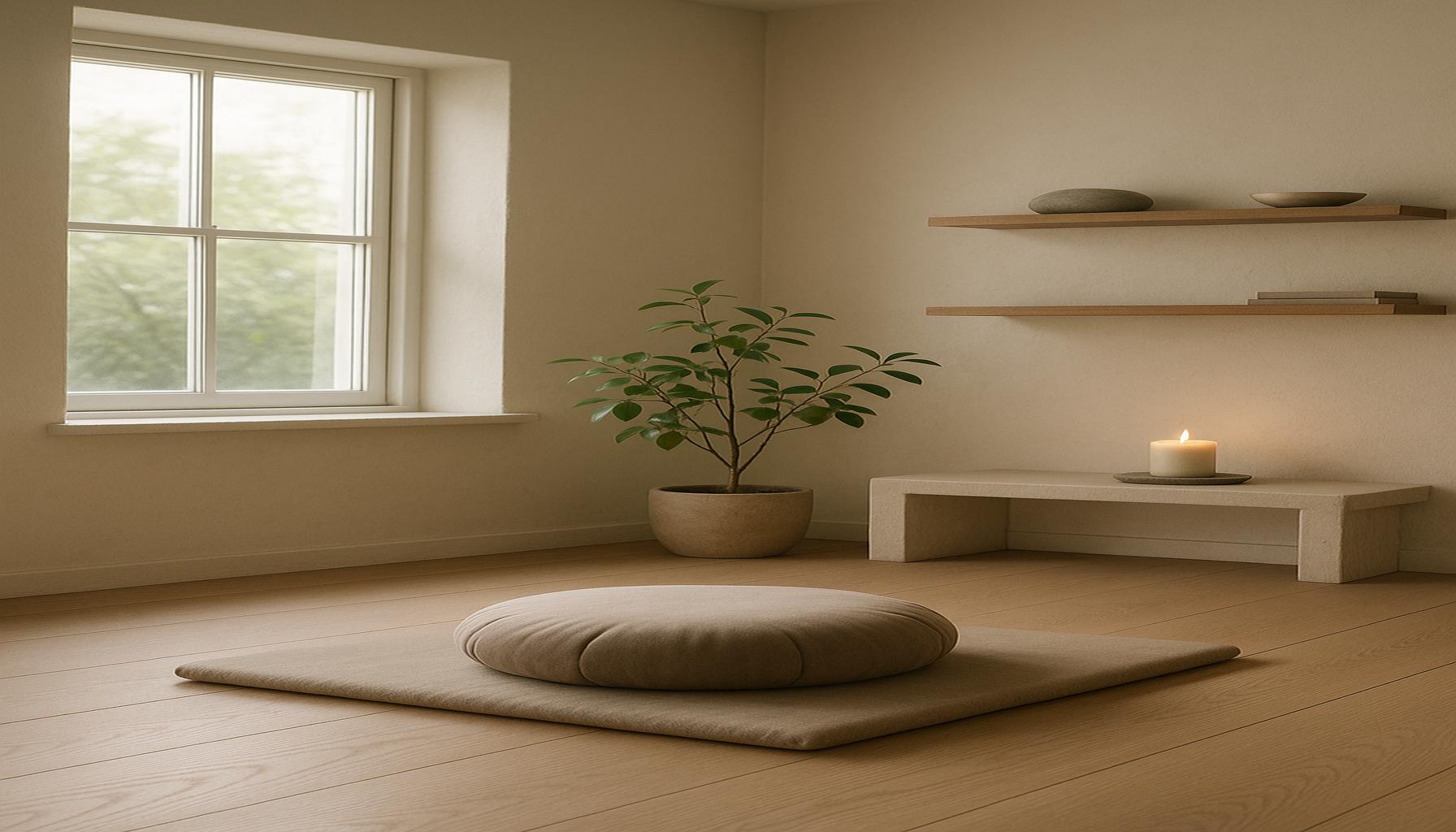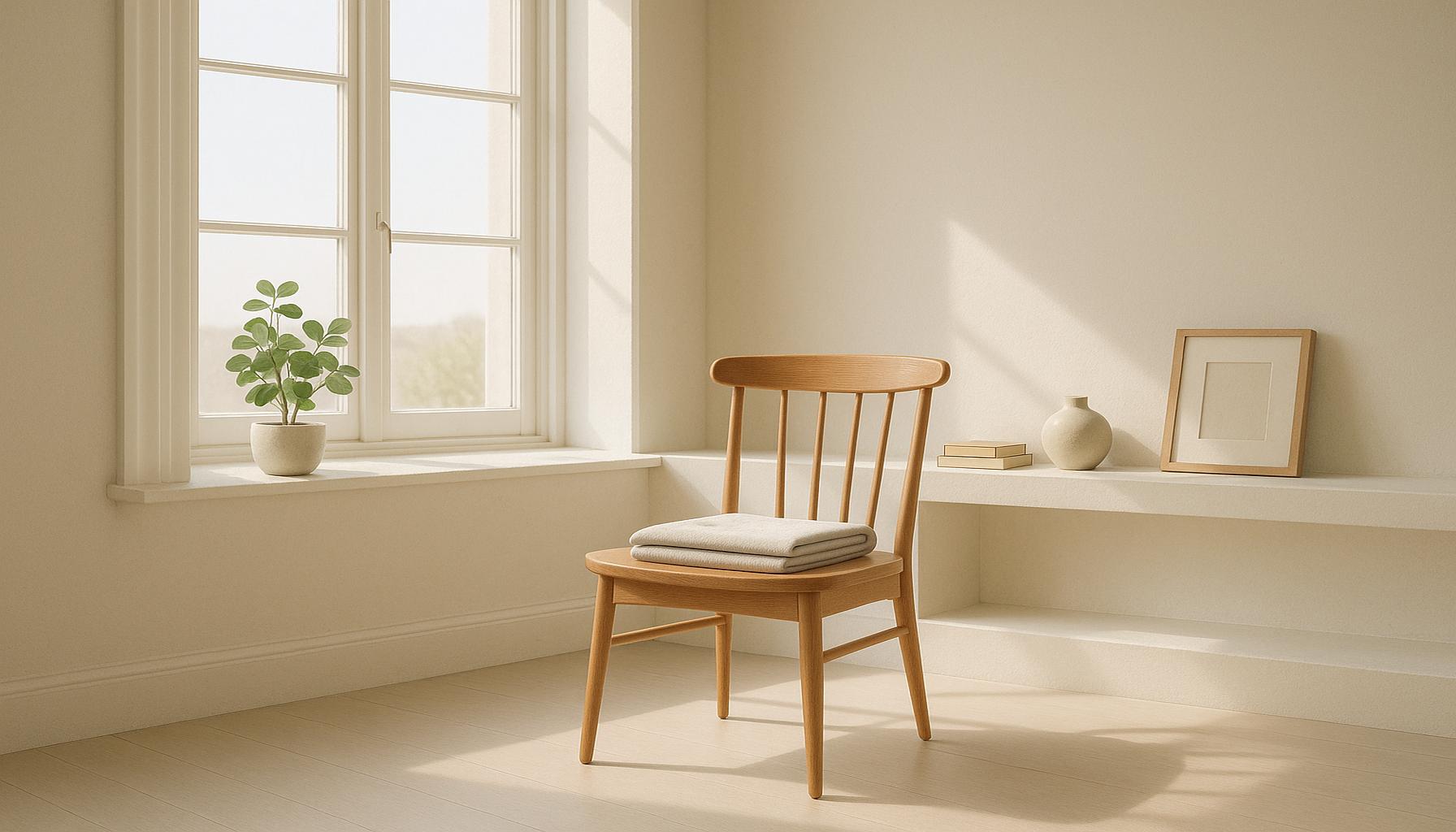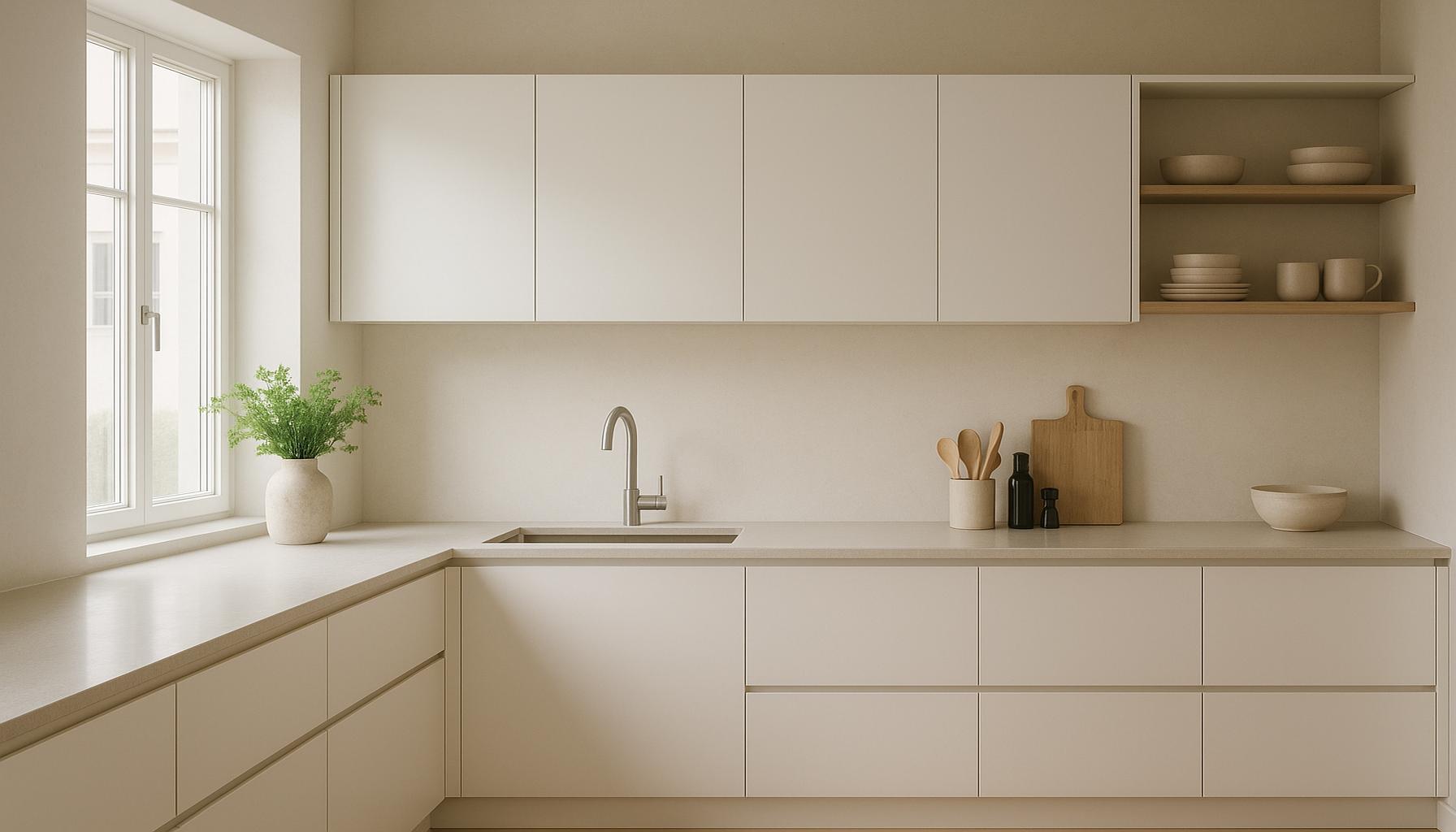Minimalist Workspaces: How Organization Can Enhance Mental Clarity and Calm

Understanding the Impact of Workspace Design
In the hustle and bustle of modern life, spatial design has a profound influence on our cognitive and emotional well-being. A chaotic workspace filled with scattered papers, cluttered desk items, and an overwhelming array of colors can create a psychological burden, distracting us from our tasks and contributing to feelings of anxiety. In contrast, a minimalist workspace—characterized by a clean, organized environment—offers a sanctuary of clarity and focus, essential for enhancing mental function and productivity.
Examining the features of a minimalist workspace can shed light on how they actively contribute to a more serene mental state:
- Decluttered surfaces: By eliminating extraneous items such as old paperwork, unused supplies, and personal effects, one can focus on what truly matters. This prioritization is crucial for efficiency. For example, a study from the University of California, Irvine found that it takes an average of 23 minutes to re-focus after a distraction, emphasizing the importance of a streamlined work setup.
- Neutral color palettes: The psychological effects of color are well-documented. Soft hues like beige, light gray, or pastel greens have been shown to lower stress levels and promote a state of calmness. In workplaces where these colors dominate, employees report a higher level of satisfaction and reduced anxiety, leading to improved job performance.
- Functional furniture: Furniture that serves multiple purposes, such as a desk that incorporates storage solutions or a chair that can easily convert into a relaxation space, promotes organization. This multifunctionality not only conserves space but also prevents clutter accumulation. For instance, the popularity of standing desks in the United States reflects a trend that not only focuses on function but also addresses health concerns associated with prolonged sitting.
Research increasingly supports the assertion that organization—both physical and mental—directly influences our cognitive abilities. A report from the Princeton University Neuroscience Institute highlights that clutter can hinder our brain’s capacity to process information. This suggests that a simpler environment may enhance decision-making abilities and foster an increased sense of control over one’s tasks, leading to a more empowered individual.
Investing in a minimalistic workplace is not merely about aesthetics; it is a commitment to mental wellness. A thoughtfully designed space actively contributes to a tranquil atmosphere that nurtures creativity and sustained concentration. As we delve further into the profound effects of minimalism, we will uncover deeper insights into how this intentional simplicity can create pathways to enhanced productivity and mental clarity.
DIVE DEEPER: Click here to uncover more about minimalism
Designing for Clarity: Key Components of Minimalist Workspaces
To comprehend the true power of minimalist workspaces, we must delve into the practical aspects that define such environments and the positive effects they have on our mental clarity and overall well-being. A minimalist approach is not merely about fewer belongings; it entails purposeful organization and strategic design that promote focus and reduce stress. Here are some crucial components that contribute to this transformative workspace philosophy:
- Intentional Layout: The arrangement of furniture and tools is vital for optimizing workflow. A well-planned layout minimizes unnecessary movement and distractions. On average, employees who experience less movement in their workspace are reported to complete tasks 15% faster. This efficiency stems from the ability to keep essential tools within reach and maintain a smooth flow of activities.
- Storage Solutions: Innovative storage options, such as wall-mounted shelves or under-desk drawers, facilitate the concealment of materials that are not in immediate use. Such solutions can dramatically reduce visual clutter. Stanford University’s research suggests that organized spaces can improve productivity by upwards of 20%, highlighting the importance of strategic storage in a minimalist setting.
- Natural Lighting: Emphasizing natural light not only enhances the aesthetics of a workspace but also positively impacts mood and energy levels. Studies have shown that exposure to natural light can improve alertness and creativity by as much as 40%. Additionally, the use of soft, artificial lighting where necessary can further eliminate harsh glares, fostering an inviting atmosphere conducive to deep work.
- Personal Touches: While minimalism advocates for a decluttered space, the incorporation of a few personal items—such as a singular piece of art or a thriving plant—can invigorate the workspace without overwhelming it. Research indicates that even moderate exposure to greenery can enhance cognitive function and reduce stress, illustrating how a touch of personalization can coexist beautifully within a minimalist framework.
Understanding these elements allows us to appreciate how a well-crafted environment can lead to a significant boost in mental clarity. An organized workspace minimizes cognitive overload and fosters a deeper sense of tranquility, allowing for sustained engagement with tasks at hand. According to the American Psychological Association, people working in organized environments report feeling more empowered in their roles and experience less burnout, validating the relationship between workspace design and psychological well-being.
Ultimately, the effectiveness of minimalism in workspaces reflects a broader cultural shift towards simplicity and clarity in both professional and personal domains. As we explore further, we will uncover how the principles of minimalism can be seamlessly integrated into various work environments and how they can redefine our relationship with productivity and mental peace.
| Advantage | Description |
|---|---|
| Clutter Reduction | A minimalist workspace helps in reducing distractions caused by clutter, allowing for heightened focus. |
| Enhanced Productivity | With a clean environment, individuals often experience boosted productivity through improved organization and less mental fatigue. |
When considering how organization directly affects mental clarity and calm, one must also examine the interplay between space utilization and emotional well-being. A minimalist workspace invites a sense of peace that transcends merely visual simplicity. Studies have shown that people are able to retain over 60% more information and are less prone to anxiety in environments that are orderly and aesthetically pleasing. By strategically reducing the chaos of excess items, individuals can unlock their potential, leading to better work-life balance. Moreover, choosing the right colors and materials can transform not just the physical space but also the mood within it. Soft tones and natural elements encourage a feeling of serenity, thus providing a productive haven for creativity and focus. Applying these principles can go a long way in crafting a workspace that not only seeks to enhance efficiency but also nurtures the mind, making the journey toward clarity and calm a tangible reality.
DISCOVER MORE: Click here to learn how to declutter your life</
The Psychological Impact of Minimalism on Productivity
Beyond the tangible benefits of organization, minimalist workspaces also hold profound implications for psychological health and productivity. The shift toward a clutter-free environment not only enhances physical space but also cultivates mental clarity. When individuals work in simplified surroundings, they often experience reduced anxiety levels, which can facilitate enhanced focus. According to Harvard Business Review, an overwhelming number of employees express that clutter distracts them from their work, leading to a loss of concentration and an increase in the time taken to complete tasks.
Additionally, studies conducted by the University of California indicate that physical clutter in an office can lead to mental clutter, which can ultimately diminish the ability to concentrate. The resulting cognitive overload from a disorganized space can prompt stress responses that inhibit creativity and critical thinking. In contrast, a minimalist environment fosters clear thought processes, enabling individuals to engage more completely with their tasks and think outside the box. This phenomenon illustrates that emotional well-being and productivity are tightly woven together, highlighting the need for organizations to embrace minimalism as a means to improve workplace dynamics.
Color Psychology and Minimalism
Another layer to consider within the context of minimalist workspaces is the role of color psychology. The colors we surround ourselves with can evoke different emotional responses and impact our cognitive functions. For instance, studies have shown that blue hues promote calmness and enhance focus, making it an ideal choice for personal work areas. On the other hand, colors like yellow can stimulate creative thinking, providing an energizing environment. By strategically employing color palettes in minimalist designs, organizations can cultivate a workspace that not only looks appealing but also resonates with employees on a psychological level.
Moreover, the power of harmonizing these colors can go hand in hand with the principles of minimalism, as muted tones and simple accents can create a serene workspace. Incorporating color in moderation—with thoughtfulness in mind—ensures that the space remains uncluttered while still being visually stimulating.
Technology: A Double-Edged Sword in Minimalist Design
In the modern age, technology plays a dual role in both enhancing and complicating minimalist workspaces. While advanced organizational tools and software can simplify tasks and streamline communication, the proliferation of devices and notifications can paradoxically add to clutter and distraction. Emphasizing digital minimalism is essential to fully leverage technology’s benefits while maintaining a clear and calm workspace. Tools like project management applications can help track deliverables without overwhelming the physical space with paperwork. Embracing cloud storage solutions not only helps minimize physical files but also enhances accessibility and collaboration among team members.
Decluttering Digital Spaces
Creating a minimalist workspace involves considering digital landscapes alongside physical ones. Regularly reviewing and decluttering emails, files, and applications can drastically improve digital efficiency. A simple practice of sorting files into specific folders and deleting old or irrelevant materials can enhance focus and make retrieving information seamless. Research shows that organizations that adopt streamlined digital communication technologies experience significant improvements in project delivery times and employee satisfaction, reinforcing the connection between tech-use strategy and a minimalist ethos.
In summation, minimalism in workspaces extends beyond reduced belongings; it addresses psychological well-being, color influence, and the strategic use of technology. By integrating these elements mindfully, organizations can not only enhance productivity but foster a workplace culture that prioritizes mental clarity and peace.
DIVE DEEPER: Click here to enhance your productivity
Conclusion
Embracing a minimalist workspace transcends mere aesthetic choices; it fundamentally reshapes how we interact with our environments and our tasks. As evidenced by research, the psychological benefits of decluttering—ranging from reduced anxiety to enhanced mental clarity—illustrate a compelling case for minimalism in professional settings. By redefining our spaces, we unlock the potential for greater focus and creativity, leading to higher productivity.
Moreover, the intentional use of color can profoundly influence our emotional responses, highlighting that the design of a workspace should be as deliberate as its organization. The interplay between visual elements and minimalist principles fosters an ambience that nurtures both calm and efficiency.
Technology, while an essential ally in modern work environments, must be managed with care. The integration of digital minimalism can further alleviate cognitive overload, allowing employees to thrive without the burden of excessive information or distractions. Regular digital decluttering should be as commonplace as physical tidying to maintain clarity in all aspects of our work lives.
Ultimately, creating minimalist workspaces is a holistic approach that recognizes the profound impact of surroundings on mental well-being. Organizations that prioritize these principles not only cultivate a more harmonious environment for employees but also drive a culture of productivity and creativity. As we continue to navigate the complexities of the modern workplace, minimalism stands as a powerful tool for enhancing both individual and organizational success. Those ready to explore this paradigm shift will find themselves reaping the rewards of a more focused and tranquil work life.


